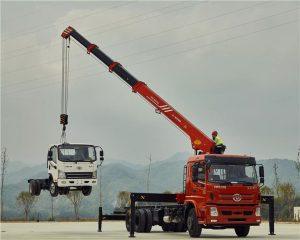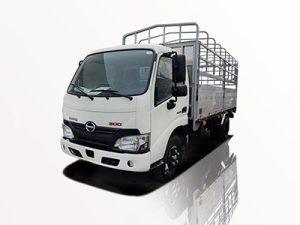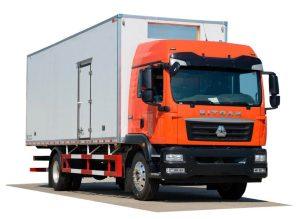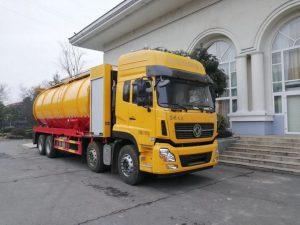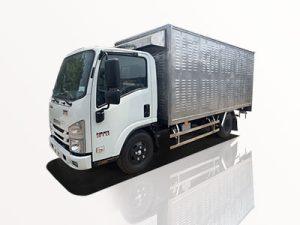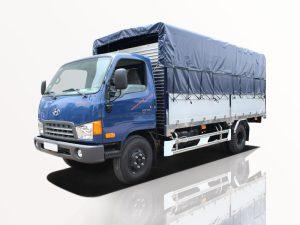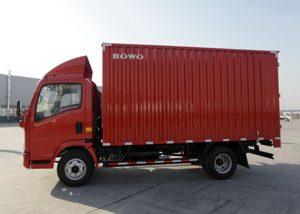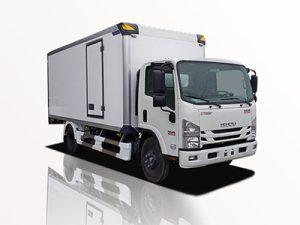Monday to Saturday - 8:00 -17:30
What is a Water Tanker? Understanding Its Importance and Uses
Introduction
Water tankers are essential vehicles designed for transporting large quantities of water. Whether used in urban areas for domestic purposes, in agriculture for irrigation, or at construction sites, these tankers play a crucial role in ensuring access to water where it may be scarce or unavailable. This article will explore what a water tanker is, its various types and uses, the benefits and challenges associated with its operation, and practical tips for selecting the right water tanker for your needs.
What is a Water Tanker?
A water tanker is a vehicle equipped with a tank for the transportation of water. It comes in various sizes and configurations depending on its intended use. Water tankers can be truck-mounted, trailer-mounted, or even self-contained units, and they serve multiple purposes, including delivery for drinking, agricultural irrigation, fire fighting, and construction needs.
Types of Water Tankers
1. Truck-Mounted Water Tankers
These are the most common type of water tankers. A tank is mounted on a truck chassis, allowing for easy maneuverability and portability in urban and rural settings. Truck-mounted tankers can vary in size from a few hundred liters to several thousand liters, depending on the vehicle type.
2. Trailer-Mounted Water Tankers
Trailer-mounted tankers are towed by vehicles such as trucks or tractors. They’re often used in agricultural settings for irrigation. They offer flexibility and can be easily disconnected when not in use.
3. Static Water Tanks
Static water tanks are stationary units that can store large amounts of water. They are usually employed in construction sites or for emergency water supply in high-demand scenarios.
4. Portable Water Tanks
These are flexible, easy-to-move tanks that can be filled and emptied quickly. They are useful for temporary water storage, often seen in events or festivals.
5. Fire Water Tankers
Specialized water tankers are designed specifically for firefighting purposes, equipped with pumps and hoses to deliver water at high pressure. They play a crucial role in fire emergencies where access to traditional water sources may be limited.
Applications of Water Tankers
1. Domestic Water Supply
In areas where access to municipal water supply is limited, water tankers are essential to provide households with drinking water. Municipalities often use water tankers to deliver water to residential areas, especially during droughts or supply shortages.
2. Agricultural Use
Agriculture heavily relies on water tankers for irrigation. Farmers use these vehicles to transport water to fields, especially in arid regions where rainfall is insufficient for crop growth.
3. Construction Sites
Water tankers are vital on construction sites for various purposes, such as mixing concrete, dust control, and providing water to workers. They help maintain productive workflows by ensuring that water is always available when needed.
4. Industrial Uses
Industries often require large amounts of water for processing, cooling, and cleaning. Water tankers provide a continuous supply and help meet operational demands efficiently.
5. Emergency Services
During natural disasters or emergencies, water tankers can deliver essential water supplies to affected populations, providing essential relief and support.
Benefits of Using Water Tankers
1. Accessibility
Water tankers can reach remote areas where traditional infrastructure may not exist, thus ensuring that even the most rural communities have access to water.
2. Cost-Effective
By providing a direct means of transport, water tankers can significantly reduce the cost of water distribution compared to stationary water sources.
3. Flexibility
They can be used for various applications, making them versatile tools for both domestic and industrial use. Adjustments can be made to the tanker design depending on the specific needs of the job.
4. Emergency Response
Water tankers provide a quick response solution in emergencies, delivering essential water supplies swiftly.
Challenges of Using Water Tankers
1. Maintenance and Costs
Water tankers require regular maintenance to function efficiently. This includes checking for leaks, corrosion, and ensuring that the pump systems are in good working condition. The costs of maintenance can accumulate over time.
2. Health Concerns
If not properly cleaned, water tankers can become breeding grounds for bacteria or contaminants. Regular sanitation is crucial to ensure the water remains safe for consumption.
3. Environmental Impact
Increased use of water tankers can contribute to road wear and tear as well as environmental issues like pollution, especially if they are not maintained properly.
Choosing the Right Water Tanker
1. Determine Your Needs
Assess the nature of your water requirement. Is it for drinking, irrigation, emergency services, or construction? Understanding your specific needs can guide you in selecting the appropriate type and size of water tanker.
2. Assess Capacity
Select a tanker that offers sufficient capacity for your requirements without being overly large to avoid wastage. Evaluate usage frequency to determine an optimal size.
3. Check for Quality
Ensure that the tanker is made from high-quality materials to prevent leaks and ensure durability. Look for certifications that guarantee the tanker’s safety and suitability for transporting potable water.
4. Consider the Design
Different designs may suit different applications. For instance, a fire tanker requires more powerful pumps than a simple mobile water container used for agricultural purposes.
Practical Examples of Water Tanker Usage
Example 1: Domestic Water Delivery
In a town facing water rationing due to a prolonged drought, local authorities deployed water tankers to deliver fresh water to households weekly, providing essential drinking water to families who had limited access to municipal sources.
Example 2: Agricultural Irrigation
A farmer in a semi-arid region invests in a trailer-mounted water tanker to efficiently irrigate his crops, reducing dependency on variable rainfall and improving yield significantly over previous years.
Example 3: Emergency Relief
After a severe hurricane, a water service company deploys its fleet of water tankers to devastated neighborhoods to provide clean drinking water to affected residents, demonstrating the tanker’s role in disaster response.
FAQs about Water Tankers
1. How much water can a water tanker hold?
The capacity of water tankers varies widely, ranging from 1,000 liters for smaller models to over 30,000 liters for large industrial units.
2. Are all water tankers suitable for drinking water?
No, not all tankers are safe for transporting drinking water. It’s essential to choose a tanker specifically designed for potable water to avoid health risks.
3. How often should water tankers be cleaned?
Water tankers should be cleaned regularly, ideally after each use, especially if transporting drinking water. Proper sanitation helps prevent contamination.
4. Can water tankers be used for any type of liquid?
While water tankers are designed for water, some can be modified to transport other non-chemical liquids. However, it’s crucial to check compatibility and safety guidelines for the liquid being transported.
5. How do I know if a water tanker is suitable for my needs?
Consider the intended use, capacity, and whether the tanker is licensed for transporting potable water. Consulting with a professional or supplier can provide guidance tailored to your specific requirements.
6. What maintenance is required for a water tanker?
Routine checks for leaks, pump functionality, tank cleanliness, and overall mechanical condition are essential for optimal performance and longevity.


